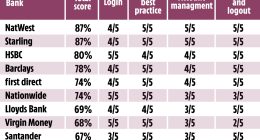
Opinions expressed by Entrepreneur contributors are their own.
If Sherlock Holmes were to take on the case of the mysteriously dwindling productivity, he would have a complex enigma on his hands. According to a recent report by the Institute for Corporate Productivity (i4cp), worker output in the U.S. has seen its worst drop since 1947, with labor productivity growth at a historically low rate of 1.1% from 2019 to 2023.
This phenomenon isn’t localized to the U.S. The U.K. and Canada have seen the weakest annual growth since 2013, and Australia has witnessed its “biggest fall in labor productivity on record.” This global productivity predicament has instigated a plethora of theories, and the one that looks most likely is that top-down, forced return-to-office policies that undermine trust and autonomy are making workers less productive.
The office return policy: A wolf in sheep’s clothing?
To truly grasp the productivity problem, we need to peer beyond the surface-level statistics. When Microsoft asked employees about their productivity versus leaders’ perception of their teams’ productivity, the disparity was stark. A whopping 87% of employees reported they were productive at work, while only 12% of leaders shared the same confidence. This chasm of misunderstanding widens when we start enforcing return-to-office policies.
Remember the last time you were forced to do something you didn’t want to? You likely felt resentment and a lack of trust. This is exactly what’s happening with forced return-to-office policies.
The return-to-office mandate has not been received kindly. We’ve seen thousands of Amazon employees walk off the job in protest, Apple employees petition against the company’s three-day-a-week in-office policy, and Farmers Group experienced widespread outrage after the new CEO required employees to be in the office three days a week. And when workers feel their employment terms are being rewritten, trust erodes faster than a sandcastle at high tide.
Trust: The invisible fuel of productivity
Productivity and trust share a symbiotic relationship. They thrive together and wither apart. It’s like trying to bake a cake without flour — you can’t expect a delicious result without this crucial ingredient.
The i4cp report found a clear correlation between trust and productivity. High-performance organizations prioritize both the “what” and “how” of goal achievement. These organizations understand that empathy and productivity are not mutually exclusive. They cultivate a culture of trust by providing flexibility and considering employees’ needs and preferences.
According to the i4cp’s Organizational Trust Index®, trust in an organization is composed of five key elements:
- Senior leaders trust employees.
- Managers trust their team members.
- Managers are trusted by their direct reports.
- Employees trust their team members.
- The senior leadership team is trusted by employees.
These elements are like the five fingers on a hand — each one is crucial for the hand to function effectively. And it’s not just theory. The presence of these five elements explains an 18% increase in productivity since the start of the pandemic for participating organizations.
The power of trust in creating healthy cultures
A fascinating trend emerges when we compare high-performance organizations with low-performance ones. High-performance companies are more likely to strongly agree with the five trust statements by a factor of 3 to 11 times over low-performing companies.
In stark contrast, only 2% of respondents from low-performance organizations strongly agreed that their senior leaders trust employees, and a mere 3% stated that employees trust senior leaders. On the other hand, those from high-performance organizations were a whopping 11 times more likely to strongly agree that there is trust between these groups.
If trust is the fuel for productivity, lack of trust is the pollutant that leads to organizational toxicity. The i4cp study found that those who described their organizations’ cultures as toxic were 16 times more likely to state “lack of trust in senior leaders” as a problem that needs addressing. Moreover, these respondents were 10 times more likely to report an “unsafe environment for expressing opinions or concerns” as a major issue in their organizations.
On the flip side, a healthy organizational culture is marked by a strong presence of trust. Those who perceived their organizations to have very healthy cultures reported that they have leaders who lead by example, are held accountable for employee outcomes, regularly communicate values and address poor behavior immediately.
So, the writing on the wall is clear. Trust is the secret ingredient in the productivity recipe. A return-to-office mandate, if imposed without thoughtful consideration of employees’ needs and preferences, undermines this trust. The key lies in maintaining flexibility, fostering a culture of trust and letting productivity flourish naturally. After all, trust is not a nice-to-have; it’s a must-have.
Autonomy: The invisible catalyst for productivity
If trust is the fuel of productivity, then autonomy is the catalyst. It speeds up the process, sparks creativity and fosters innovation.
According to the i4cp report, companies with the highest productivity provide the highest levels of autonomy to their individuals and teams. This autonomy is closely tied to trust, and together, they account for a significant proportion of productivity. Specifically, the autonomy of individuals and teams explains 15% of the variability in productivity.
When companies mandate a return to the office, they may unknowingly be sapping their employees’ autonomy and, in turn, trust. It’s like unintentionally adding a slow-acting poison to a flourishing garden. These two factors — autonomy and trust — are vital to innovation and productivity. By undermining them, organizations are, in essence, hampering their own progress.
The most innovative companies understand this well. They provide flexibility and autonomy, allowing teams and individuals to determine the right work model for their roles. This approach is akin to giving the master chef the freedom to experiment with ingredients, techniques, and recipes.
However, not all organizations have grasped the importance of autonomy. The i4cp report reveals a stark contrast between high and low-performing companies. High-performing organizations are more likely to offer high levels of autonomy to individuals (77%) and teams (82%). On the other hand, low-performing companies trail significantly, with only 58% providing high levels of autonomy to individuals and 62% to teams.
Naturally, forced, top-down return-to-office policies that don’t get buy-in from employees undermine autonomy, for individuals and teams alike. And that hurts productivity.
Related: Want to Be More Productive? Stop Trying to Finish Every Task, and Do This Instead
The future of work: Autonomy, trust and flexibility
The message is clear: If we want to boost productivity, we need to rethink our approach to the workplace. Autonomy, trust and flexibility should be at the forefront of this transformation.
As we stand at the crossroads of productivity, it’s time to reconsider our direction. The forced return-to-office strategy is like trying to fit a square peg in a round hole — it’s not only difficult but also damaging. We need to put trust back in the driver’s seat and give employees the flexibility to choose their working environment. That’s what I tell my clients when helping them figure out their return-to-office policies — you need to make sure to get employee buy-in to cultivate trust and provide autonomy for team decision-making in determining their in-office work time to facilitate autonomy.
The future of work shouldn’t be a return to the past. It should be a leap forward, embracing the lessons we’ve learned during the pandemic and using them to create a work culture that fuels productivity, not hinders it. Forced return-to-office policies may seem like a simple solution, but they risk damaging the very factors that drive productivity.
This article is from Entrepreneur.com








